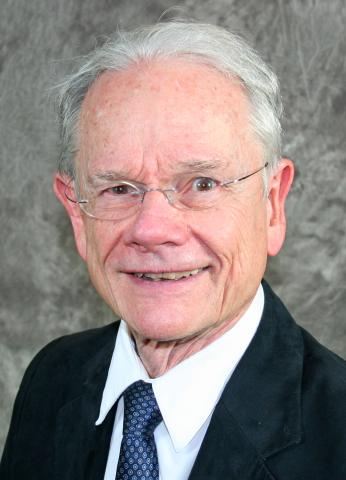
Mark S. Cushman was born in Fresno, California, on August 20, 1945. Dr. Cushman completed pre-pharmacy studies at Fresno State College (1963–1965) before enrolling as a University of California Regents Scholar in the School of Pharmacy at the University of California, San Francisco (UCSF), where he received the Pharm.D. degree in 1969. He continued at UCSF as a graduate student and was awarded the Ph.D. degree in medicinal chemistry in 1973. Dr. Cushman subsequently studied in Professor George Buchi's laboratory at the Massachusetts Institute of Technology from 1973–1975 as a National Institutes of Health Postdoctoral Fellow, and he then joined the faculty at the Purdue University College of Pharmacy in 1975, where he has served his entire independent academic career, and where he is now a Distinguished Professor Emeritus of Medicinal Chemistry.
Dr. Cushman has taught a wide variety of courses to undergraduate students, graduate students, pharmacy students, and medical students, including organic chemistry, medicinal chemistry, and pharmacology. He has served as major professor for 39 Ph.D. graduate students, mentored 59 postdoctoral students, and hosted 5 international visiting scholars.
Dr. Cushman's research focused on the design and synthesis drugs, ligands, and mechanism probes of a wide variety of macromolecular targets, including lumazine synthase, riboflavin synthase, HIV gp120, HIV gp41, protein tyrosine kinases, HIV protease, HIV integrase, tubulin, HIV reverse transcriptase, topoisomerases I and II, EGFR, estrogen receptor-a, estrogen receptor-b, aromatase, sindbis virus capsid protein, quinone reductase I, quinone reductase II, retinoid X receptor, P21, flavivirus envelope protein, MAPK, tyrosyl-DNA phosphodiesterase I, tyrosyl-DNA phosphodiesterase II, ribosome, DNA, inorganic pyrophosphatase, ERK, JAKS 1-3, TYK2, and the Myc promoter G-quadruplex. His research is documented in 350 peer-reviewed scientific journal articles and 42 patents, and it has resulted in the synthesis anticancer, antiviral, and antimicrobial drugs and mechanism probes aimed at more than thirty macromolecular targets. Three anticancer drugs that were designed and synthesized in his laboratory [indotecan (LMP 400), indimitecan (LMP 776), and LMP 744] have completed Phase I clinical trials. His research also resulted in the application of the Castagnoli-Cushman reaction to the total synthesis of a wide variety of protoberberine and benzophenanthridine alkaloids and anticancer drugs.
Dr. Cushman served on the Editorial Advisory Boards of The Journal of Organic Chemistry (1999–2004) and the Journal of Medicinal Chemistry (2005–2010), and he was Associate Editor of the Journal of Medicinal Chemistry (2012–2020). Dr. Cushman served as a Senior Fulbright Scholar at Munich Technical University from 1983–1984, where he started an extensive investigation in Professor Adelbert Bacher's laboratory on the design and synthesis of mechanism probes that revealed key aspects of the biosynthesis of riboflavin (vitamin B2).
Awards
- 1983-1984 Senior Fulbright Scholar Award
- 1983 Purdue Cancer Research Award
- 2010 Appointed Distinguished Professor, Purdue University
- 2012 Webster-Sibilsky Lectureship, University of Illinois, Chicago
- 2012 Chaney Scholar Award for Exceptional Research, Purdue University
- 2012 American Association for the Advancement of Science Honorary Fellow
- 2015 UCSF 150th Anniversary Alumni Excellence Award
- 2016 Purdue Innovators Hall of Fame Inductee
- 2017 Highly Prolific Author, the Journal of Medicinal Chemistry
- 2018 Ole Gisvold Lectureship Award in Medicinal Chemistry, University of Minnesota
- 2018 Philip S. Portoghese Lectureship, The Journal of Medicinal Chemistry and the American Chemical Society Division of Medicinal Chemistry
- 2018 National Academy of Inventors Lifetime Fellow
- 2019 Research Award in Science and Engineering, Purdue University
- Chapter of Sigma Xi
Upcoming Lectures
Dr. Dennis Liotta
August 22, 2024
STEW 306 2:30-3:30pm
Refreshments starting at 2:00pm
Making New Drugs the Hard Way
Previous Cushman Lecturers
- 2023 - Dr. Richard B. Silverman


